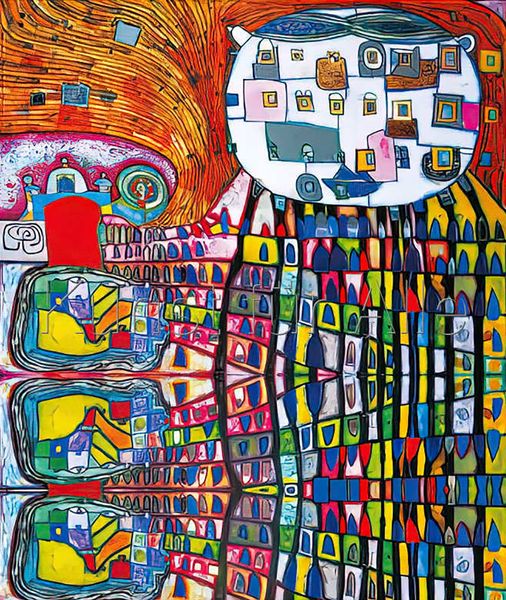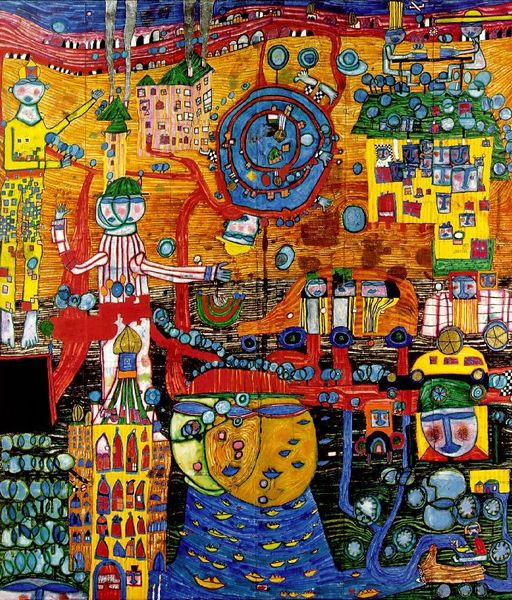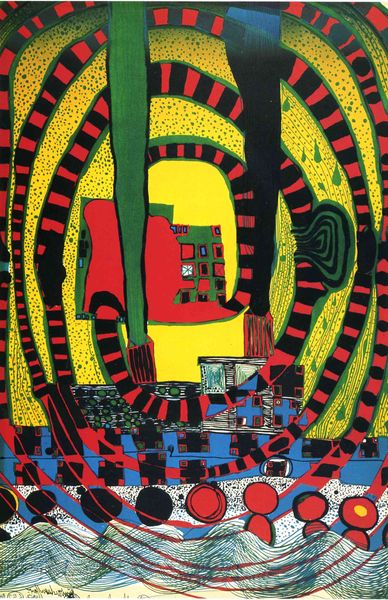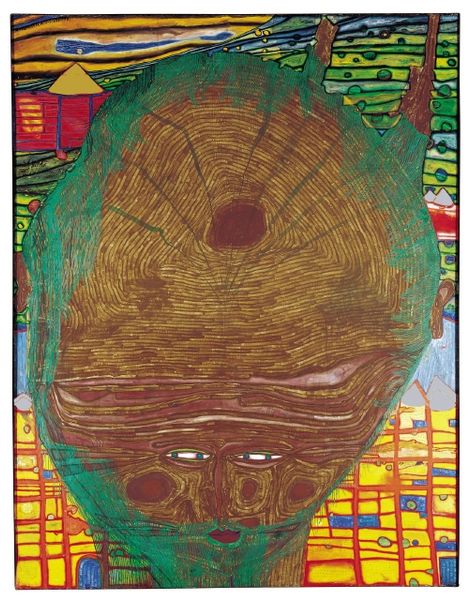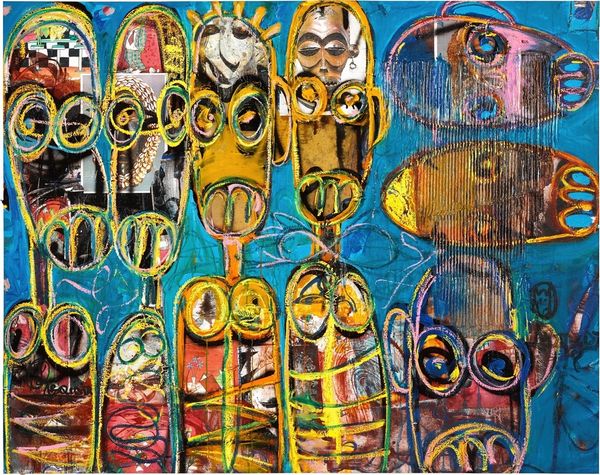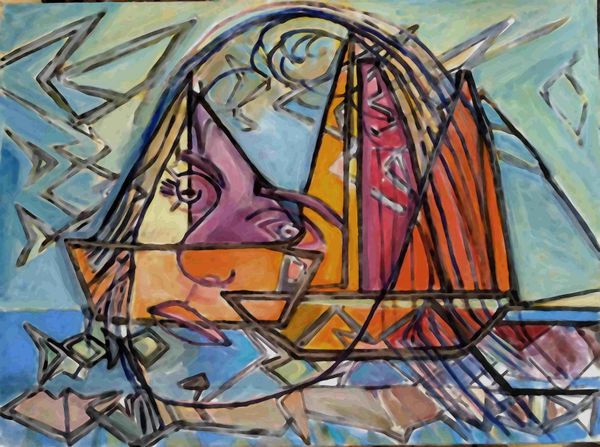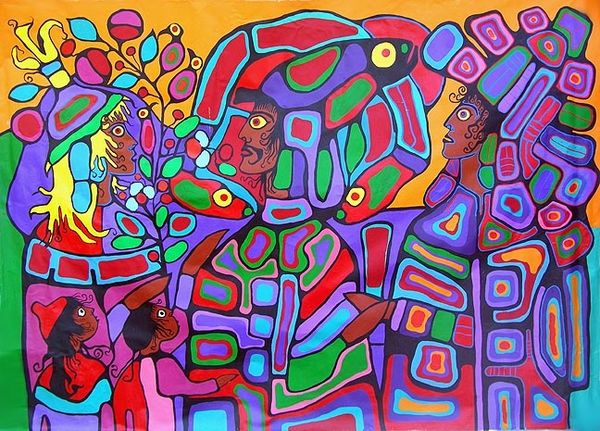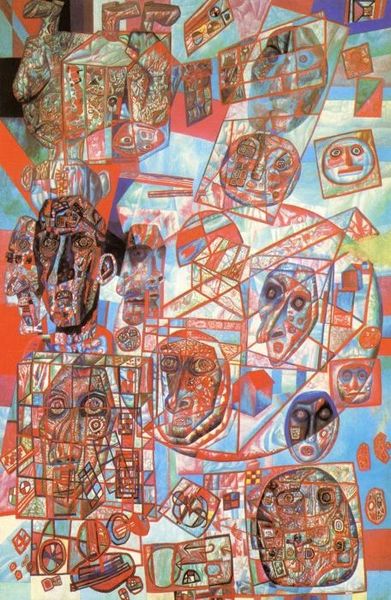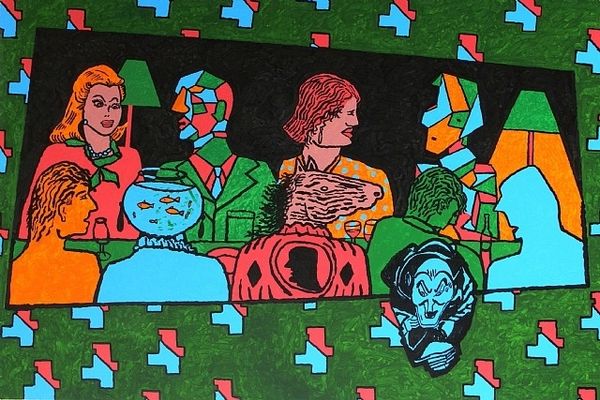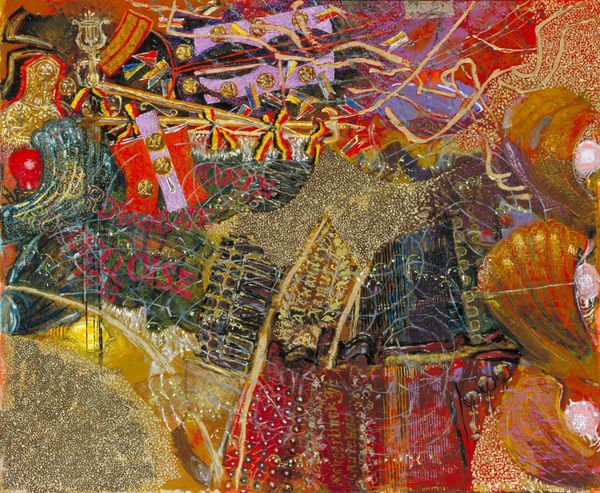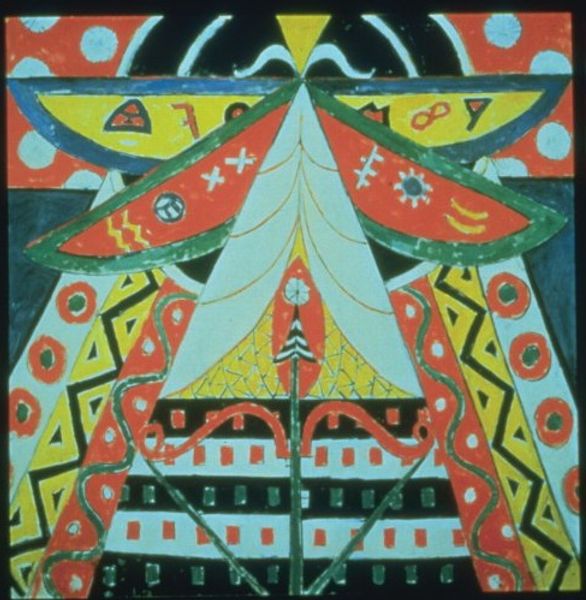
Copyright: NAMIDA AG, Glarus (displayed with the permission of Hundertwasser Non-Profit Foundation) The displayed work of art is protected under the copyright law. In particular, it is not permitted to reproduce, to alter, to print or to publish these works of art. Violations will be prosecuted according to civil and criminal law.
Curator: Welcome to KunstHausWien. Here, we encounter Friedensreich Hundertwasser’s "622 Mourning Schiele," a mixed-media painting from 1965. Editor: My immediate impression is fragmentation, almost a cubist-expressionist rendering of grief. The horizontal lines slicing across the portrait are visually jarring. Curator: Indeed. Hundertwasser employs a distinct compositional strategy. Note the layering, the planes of color and texture that both reveal and obscure. He breaks the figure down, perhaps echoing Schiele's own fractured self-portraits. Editor: I see echoes of loss here. Schiele, who died young during the influenza epidemic, became an emblem of artistic promise cut short. The distorted face, with its almost spectral palette, carries that weight of mourning. The figure perched atop the building...is it Schiele, a ghostly watchman over the rooftops? Curator: It is a strong possibility. Symbolically, consider the window above that perched figure – windows in Hundertwasser’s vocabulary often represent the human eye or societal critique. What narrative might be inferred about the man gazing out? Editor: Maybe a reminder that mortality watches us all, even from the highest points of success and visibility. I also can’t help but notice the contrast between the lower half which features an almost joyous color scheme while his visage appears ashen. The dark bands that slash his portrait look less structural than like emotional cross-outs, visual attempts to conceal grief. Curator: The rooftops and geometric forms characteristic of Hundertwasser's architecture paintings provide an anchor while those fractured, layered segments that bisect the figure give off Neo-Expressionistic quality to what would otherwise seem merely expressionistic. Editor: Hundertwasser channels the emotional intensity inherent in Expressionism to tap into the universal experience of grief. "Mourning Schiele" isn't just about a single loss but the enduring presence of sorrow. Curator: It seems that for Hundertwasser, form is less about mirroring reality, and more about representing the experience, in this instance loss as both psychological and artistic. Editor: The symbols really deepen our perception, and by combining that with careful formal reading, a full experience starts to solidify in my own psyche, an appropriate mimicry of a painful lament for another’s life.
Comments
No comments
Be the first to comment and join the conversation on the ultimate creative platform.

